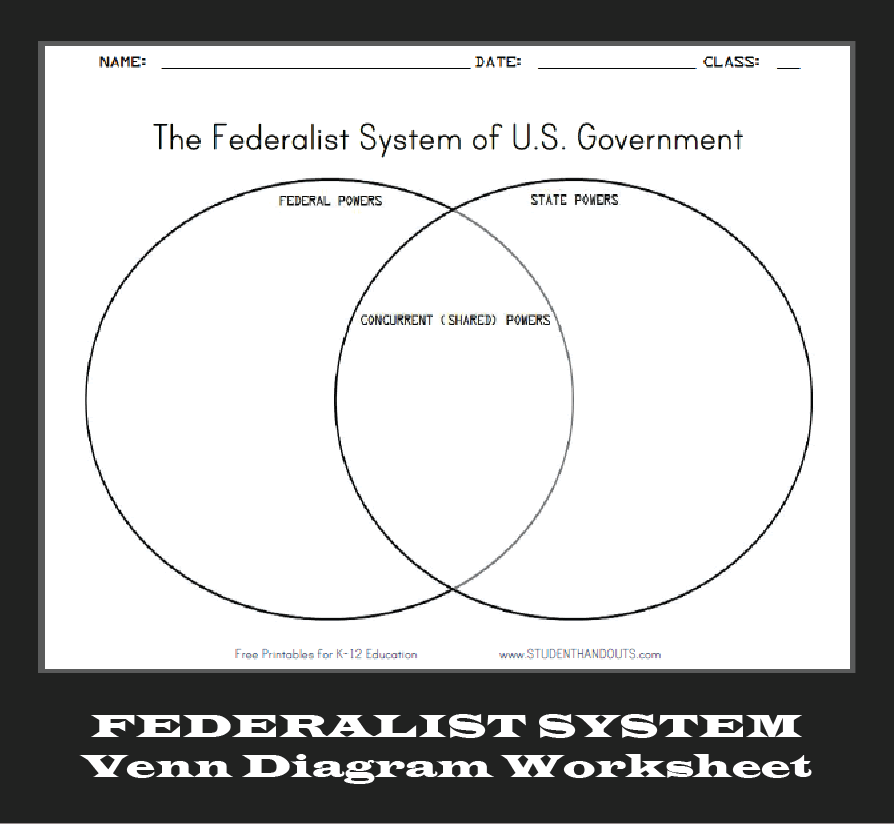Federalist System Venn Diagram |
|---|
| www.studenthandouts.com > Social Studies > Civics > Foundations of the American Government |
 |
 |
|---|
Click here to print this worksheet. Answers will vary. |
|---|
|
A federalist system is a system of government in which power is divided and shared between a central (national) government and subnational (state, provincial, or regional) governments. Federalism is a fundamental principle of government that is found in various countries around the world, including the United States, Canada, Germany, Australia, and others. The key features of a federalist system include:
Division of Powers: In a federalist system, there is a clear division of powers between the central government and the subnational governments. These powers are typically outlined in a written constitution or a foundational legal document. Dual Sovereignty: Federalism recognizes the dual sovereignty of both the central and subnational governments. Each level of government has its own sphere of authority and autonomy, and they coexist as separate entities. Shared Responsibilities: While each level of government has its own set of powers, there are often areas of shared responsibility. This means that certain functions or policy areas, such as taxation, defense, or immigration, may involve collaboration or negotiation between the central and subnational governments. Supremacy Clause: In many federal systems, there is a supremacy clause in the constitution that establishes the hierarchy of laws. It typically stipulates that the central government's laws and constitution are supreme and prevail in case of a conflict with subnational laws. Constitutional Framework: Federal systems are typically governed by a written constitution that outlines the structure of government, the distribution of powers, and the relationship between the central and subnational governments. Amendments to the constitution often require a specific procedure. Protection of Subnational Rights: Federalism is often associated with the protection of subnational (state or provincial) rights. Subnational governments have a degree of autonomy and can exercise authority over matters that directly affect their constituents. Courts and Jurisdiction: Federal systems often have a judicial branch that interprets and resolves disputes regarding the division of powers and conflicts between levels of government. These courts ensure that both levels of government adhere to the constitution. Flexibility: Federal systems can provide a degree of flexibility in governance because subnational governments can tailor policies to meet the specific needs and preferences of their constituents. This allows for experimentation and diversity in policy approaches. Cultural and Regional Variation: Federalism is often chosen by countries with diverse cultural, linguistic, or regional differences. It allows for the accommodation of these differences while maintaining a unified national identity. Stability and Conflict Resolution: Federal systems can contribute to political stability by providing mechanisms for conflict resolution and compromise between levels of government and among different regions or states. The specific features and functioning of federal systems can vary significantly from one country to another. For example, the division of powers and responsibilities, as well as the degree of autonomy granted to subnational governments, can differ based on the country's historical, political, and cultural context. Nonetheless, federalism is a key principle that enables the coexistence of centralized authority and regional autonomy within a single nation-state. Click here for a printable of the above text. |
| www.studenthandouts.com > Social Studies > Civics > Foundations of the American Government |









